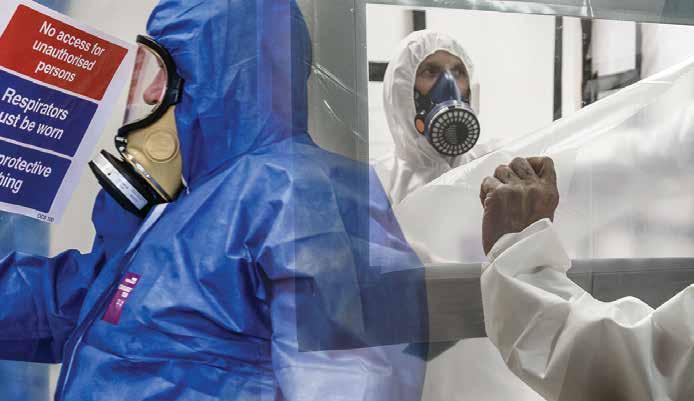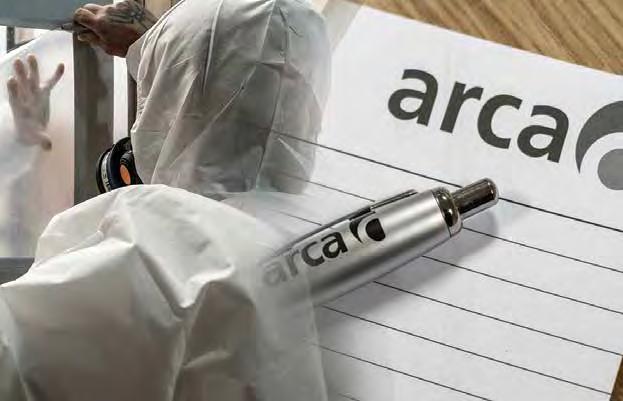
7 minute read
Information, instruction, training & supervision and asbestos removal
The I, I, T & S requirement of HASAWA has been around for over 45 years and is clearly established. It is also very relevant and crucial, for asbestos removal work as it is a very high risk and heavily regulated industry.
Origins of I, I, T & S
The Health and Safety at Work etc Act 1974 (sometimes referred to as HASAWA, the HSW Act, the 1974 Act or HSWA) is the primary piece of legislation covering occupational health and safety in Great Britain. The Health and Safety Executive (HSE) and local authorities are responsible for enforcing this Act, together with the regulations made under the Act. These regulations cover a wide range of subjects, including asbestos, through the Control of Asbestos Regulations 2012 (CAR 2012), as well as non-asbestos topics such as working at height, manual handling, vibration and noise.
Within section 2 of HASAWA, all employers have a legal duty to provide such Information, Instruction, Training and Supervision (often abbreviated as I, I, T & S) as is necessary to ensure, so far as is reasonably practicable, the health and safety at work of employees.
Information Requirements in CAR 2012
Regulation 5 of CAR 2012 requires employers to identify the presence of asbestos and its type and condition (e.g. from an asbestos survey) before any building, maintenance, demolition or other work, liable to disturb asbestos, begins. It also sets out the requirement to arrange a survey if existing information on the presence of asbestos in the premises is incomplete or appears unreliable. Employers will also need to assess the accuracy of information in surveys and plans provided to them, and their relevance to the location and type of work to be done in the building.
When a Licensed Asbestos Removal Contractor (LARC) visits a site to price up potential asbestos removal works, this is essentially an information gathering exercise. Not only will the LARC be assessing the accuracy of the survey (extent of the asbestos containing material, it’s condition, the way it is fixed to the substrate, the quantity of material etc.) but will also be assessing practical elements of the removal process itself, including: w Location of the decontamination unit(s) and waste skip(s), and their proximity to the working enclosure(s) w Enclosure dimensions, potential voids, adjacent areas, and extent of the air monitoring requirements w Location of negative pressure units and airlock/baglock systems, and how these will facilitate suitable air management w Power and water supplies, drainage suitable for wastewater from decontamination
w Any other special characteristics of the site and its vicinity.
Many LARC’s have developed comprehensive checklists to capture all the required information during the visit, with the end results resembling a completed questionnaire.
Regulation 6 of CAR 2012 requires employers to carry out a risk assessment to identify the risks of exposure to asbestos. It sets out the requirement to record any significant findings and identify steps to prevent, or reduce, exposure to employees. General non-asbestos risks should be considered too, as required by regulation 3 of the Management of Health and Safety at Work Regulations 1999.
All this vital information needs to be gathered and considered collectively to plan how the work will be undertaken.
Converting Information into Instruction
This is a crucial stage of the whole process.
Following the information gathering exercise, the next step for a LARC, to effectively plan a job, is to convert the information into a set of detailed and specific instructions for site teams to follow. It is not sufficient to merely reproduce the gathered information and expect this to lead to exemplary site standards and practices. The finished document needs to be a practical and useful document of instructions, and takes considerable time and skill to compile. The resulting Plan of Work, describing the safe working method to be followed, should be drawn up by a suitably competent person (as required by regulation 7 of CAR 2012). The Plan of Work is the record of how senior managers/directors want the job to be done and should include the appropriate actions to control risk and prevent harm. Its main purpose is to guide site work, and it is a


standard licence condition (on all licences) that the work will be carried out in accordance with the suitable and sufficient Plan of Work.
An up-to-date copy of the Plan of Work, in conjunction with company standard procedures, must always be on site. In addition, a copy should also be kept at the head office, so management can effectively monitor performance. Site audit findings and studies of HSE enforcement actions, strongly suggest that where the conversion process (of information into instruction) is deficient or overlooked, this often becomes the root cause of poor site performance. Conversely, strong site performance is usually linked to a robust Plan of Work, which clearly instructs site teams, together with management arrangements that ensure Plans of Work are rigorously followed.
ARCA audits assess the content of the Plan of Work and how this is applied to site arrangements and activities.
Training and Competence
Details of course content for operative, supervisor, contract manager and director training, including practical elements where applicable, are clearly documented in HSG247 (Asbestos: The licensed contractors’ guide). No person should work with asbestos without the required level of applicable training, which should be delivered by a competent training provider. This means that the trainer should have personal practical experience, and also a theoretical knowledge of all relevant aspects of the work being carried out by the employer. A training certificate is not proof of competency to do the job, but where issued, a certificate is an indication that training has been received. Any reference to competence, competent persons or competent employees, in relation to working with asbestos is a reference to a person or employee who has received adequate information, instruction and training for the task being done and can demonstrate an adequate and up-to-date understanding of the work, required control measures and appropriate law. They must also have enough experience to apply this knowledge effectively.
Appropriate level NVQs are one way of assessing competence. Through ARCA, each of the key asbestos removal job roles (operative, supervisor and manager), have a clear career path of training and competency recognition.
Supervision
When working with asbestos, the supervisor has a crucial role in making sure employees and others follow the procedures, controls and preventative measures set out in the risk assessment and Plan of Work. The supervisor should also be on site at all key stages of the work. Some examples of key stages, as defined in L143 (Managing and working with asbestos, Control of Asbestos Regulations 2012 Approved Code of Practice and guidance) are witnessing the smoke test, ensuring that the hygiene facilities are fully operational before work starts, ensuring signs and barriers are correctly erected, and carrying out daily checks. It is difficult to envisage any stage of the asbestos removal process as not being a ‘key’ stage.
A supervisor is not simply an operative who has completed supervisor training. Once training has been carried out, the employer will need to ensure that it has resulted in producing a competent and able supervisor. Training Needs Analysis is likely to identify the need for training/support/coaching in relation to man-management, leadership, record-keeping and other organisational or management issues. Effective supervision places a great deal of responsibility on individuals and will require a range of personal qualities (such as experience, leadership, organisational skills, honesty, reliability, integrity and confidence). Such individuals can only achieve the required standards when working within a management system that provides the necessary support.
In many work situations, as the level of worker competence increases, then there can justifiably be a corresponding decrease in the level of supervision required. Not so in the asbestos removal industry.
As this is a permissioning regime, where the work activities involve significant hazards, risks or public concern, certain control measures need to extend beyond the minimum generally accepted requirements. Therefore, supervision
remains a strict requirement even when competence levels are high.
The supervisor is directly in control over the way the work is done, including the actual removal process. Effective supervision aims to prevent problems occurring, rather than simply reacting to problems after the event.









